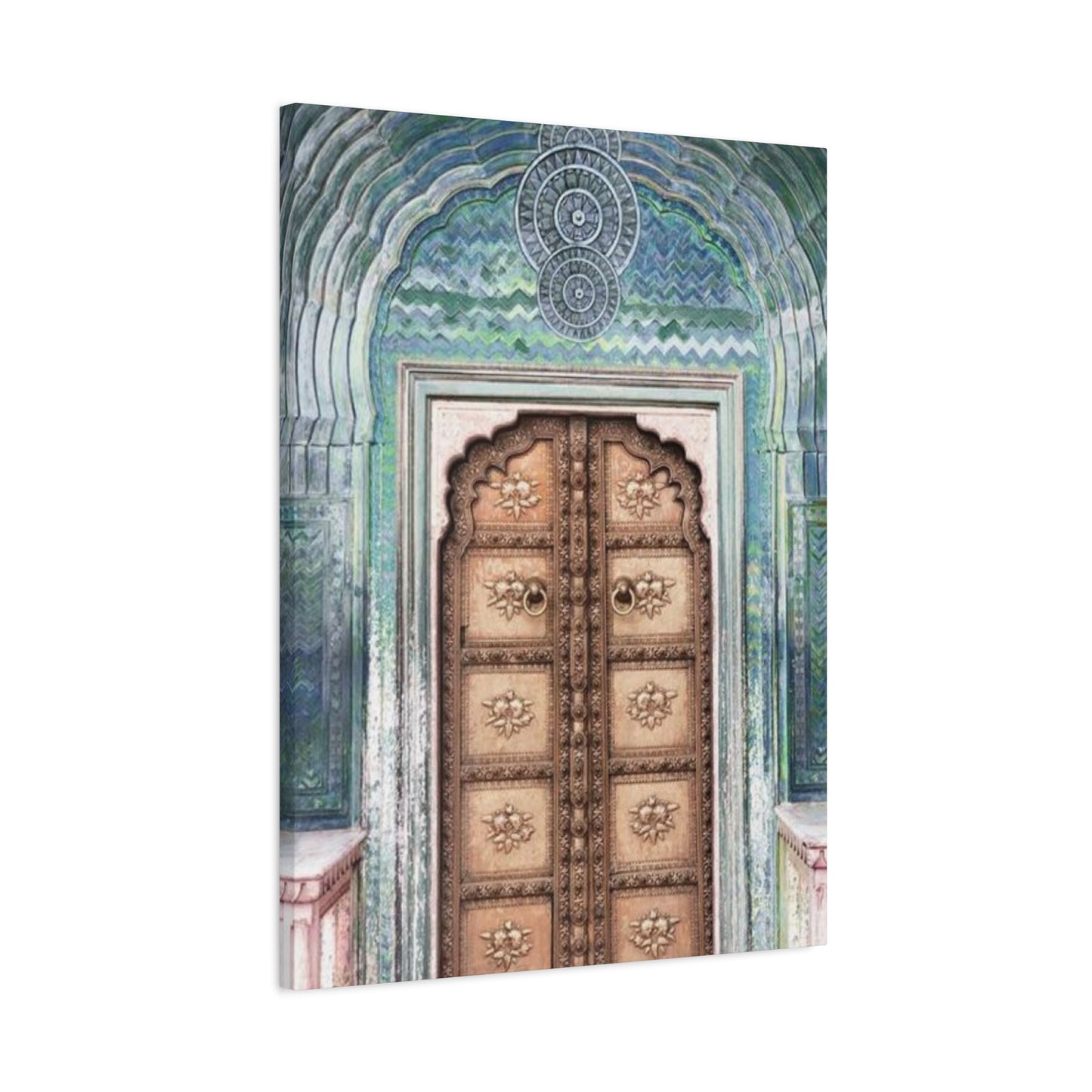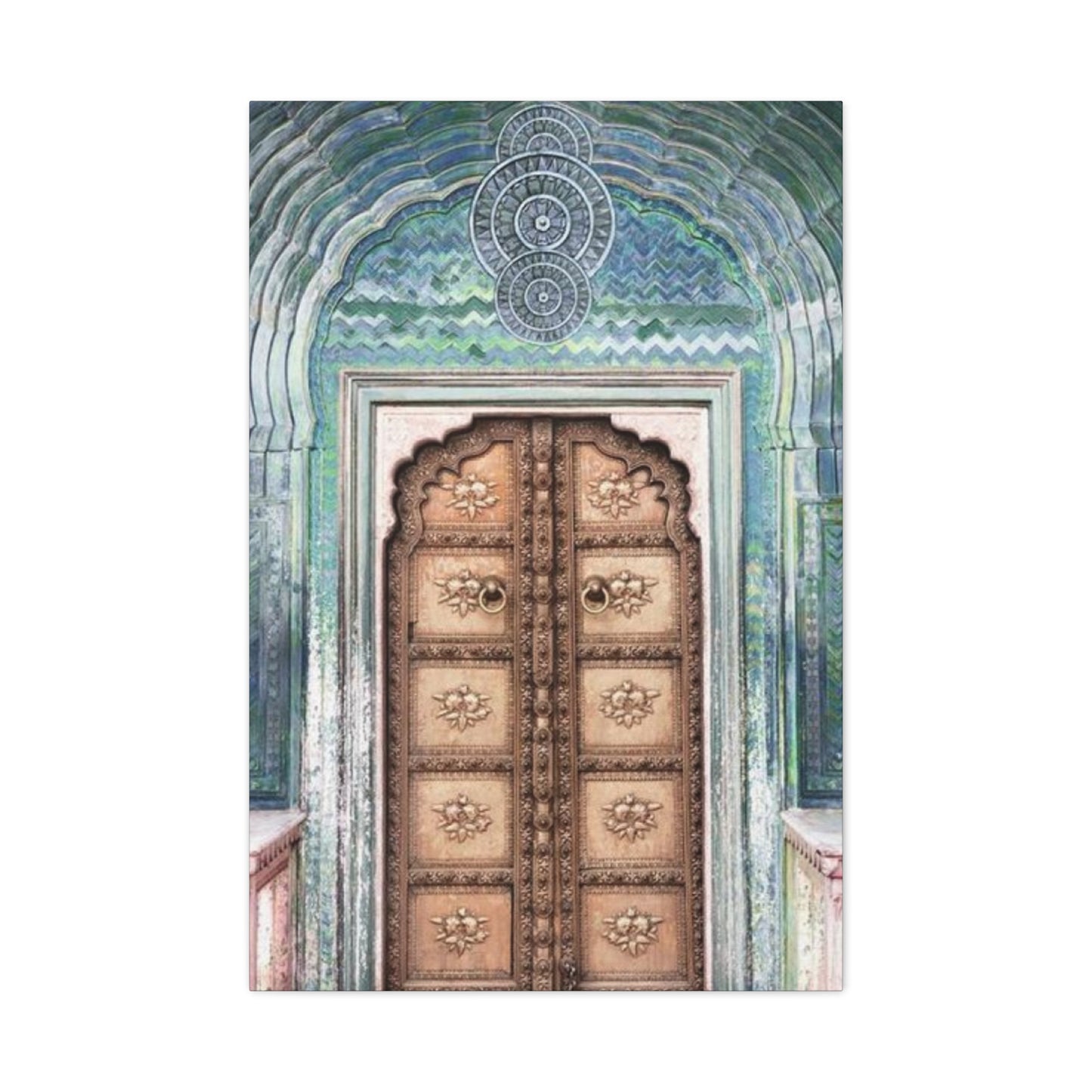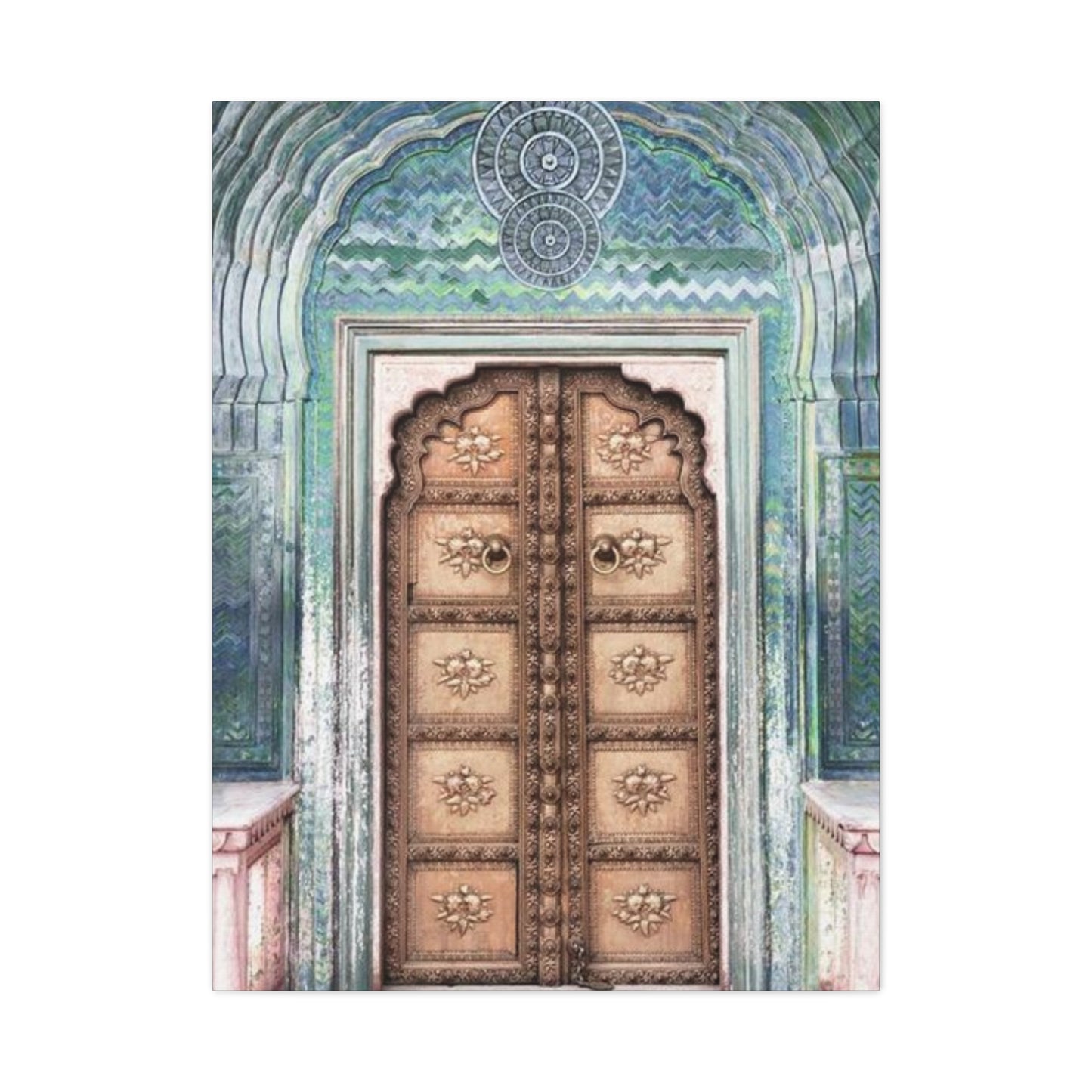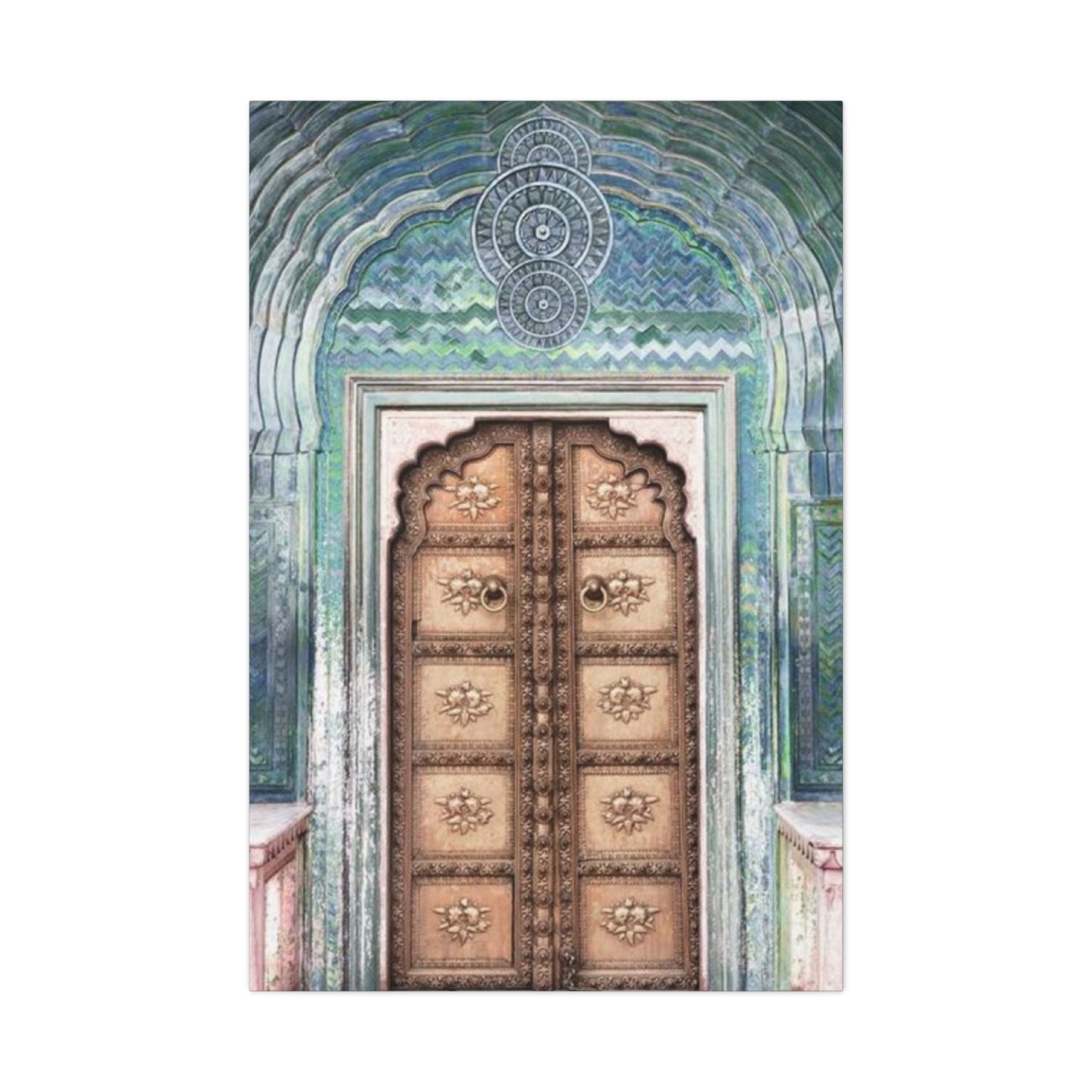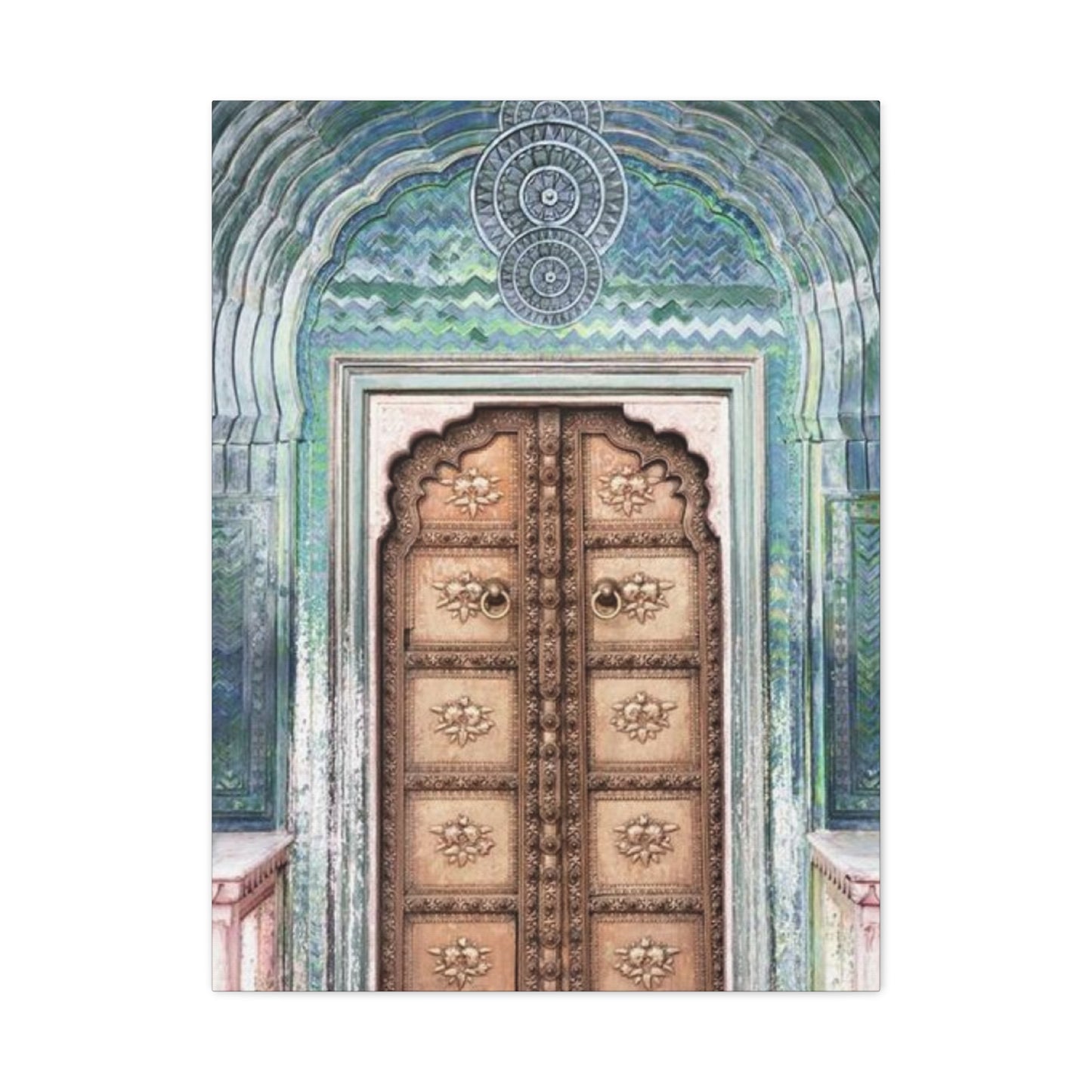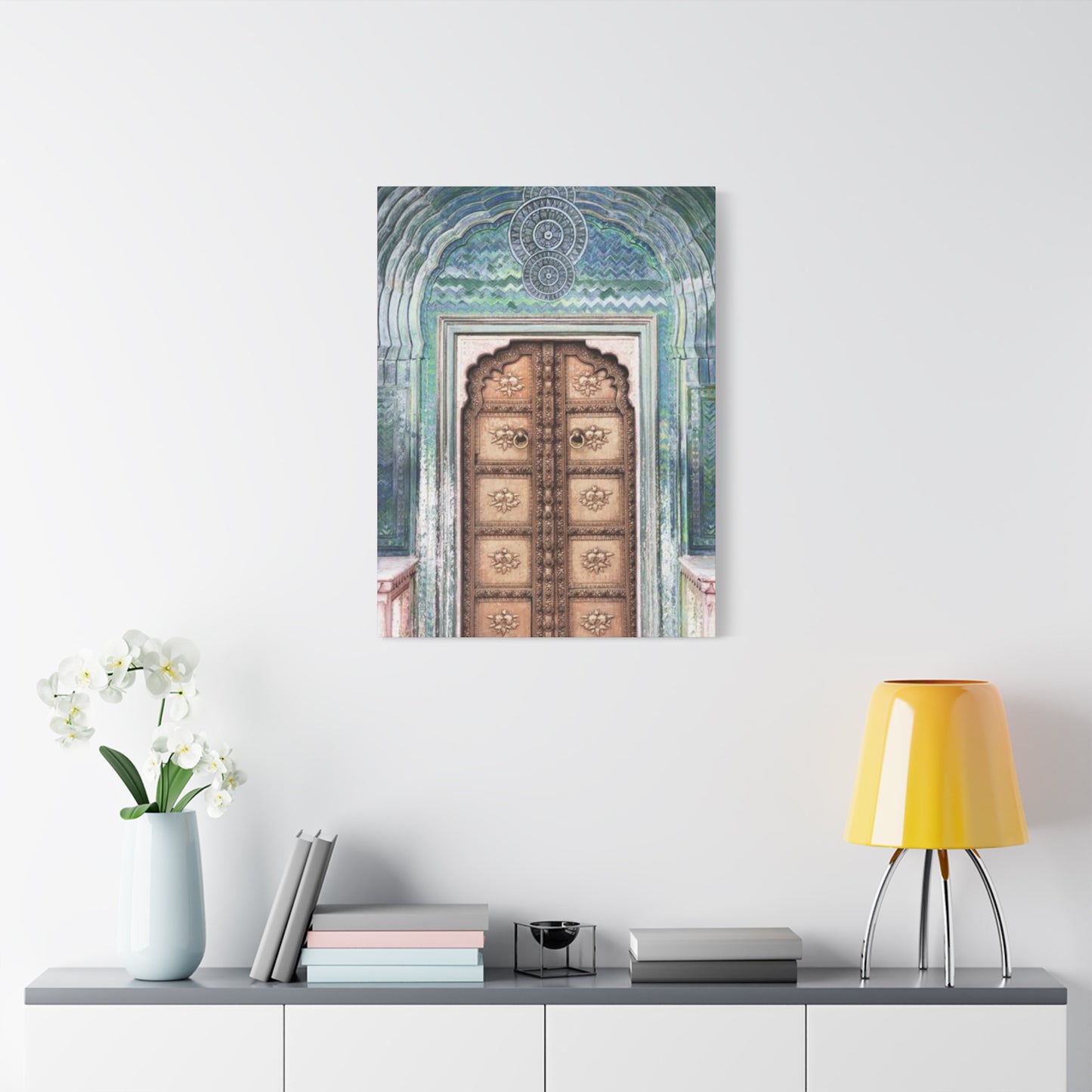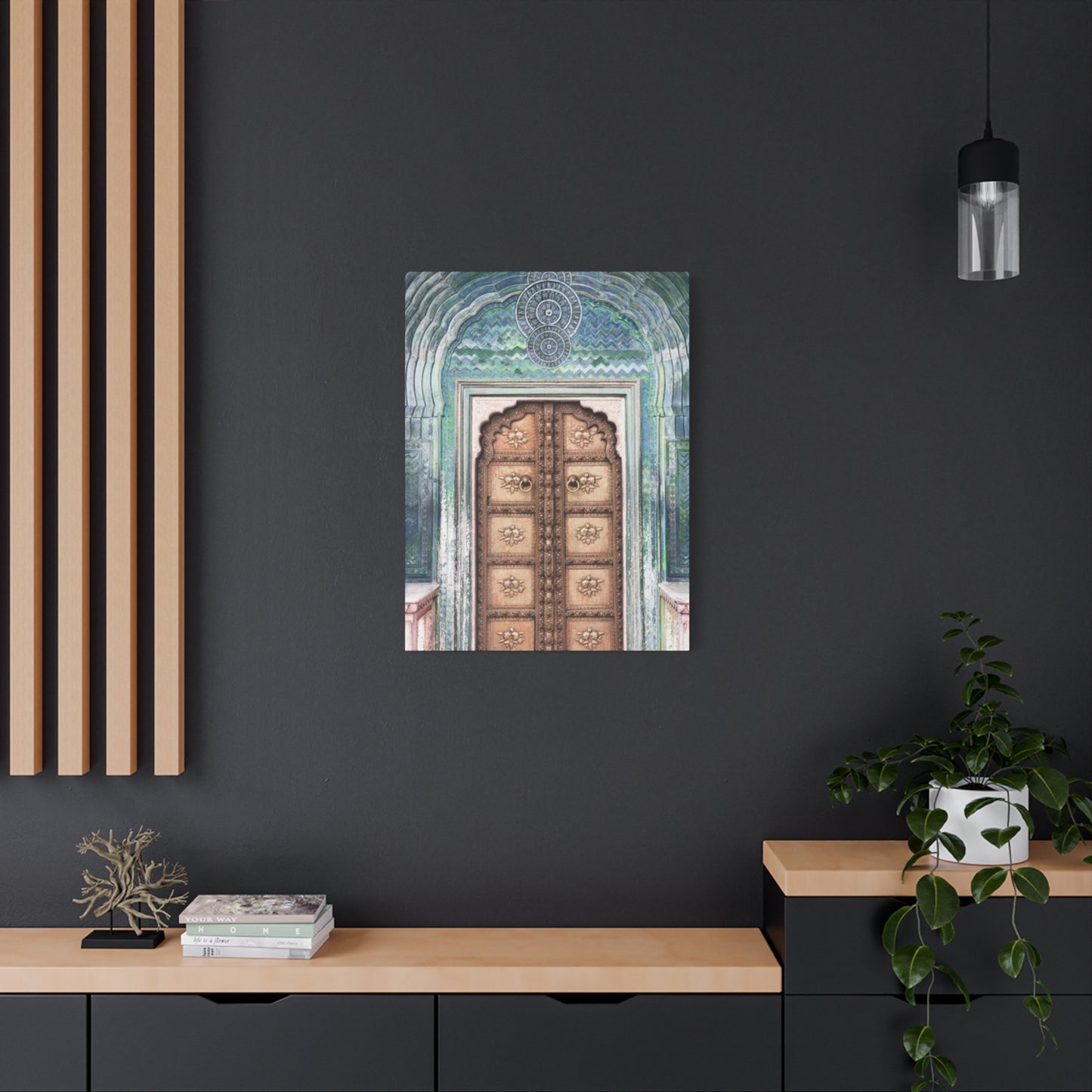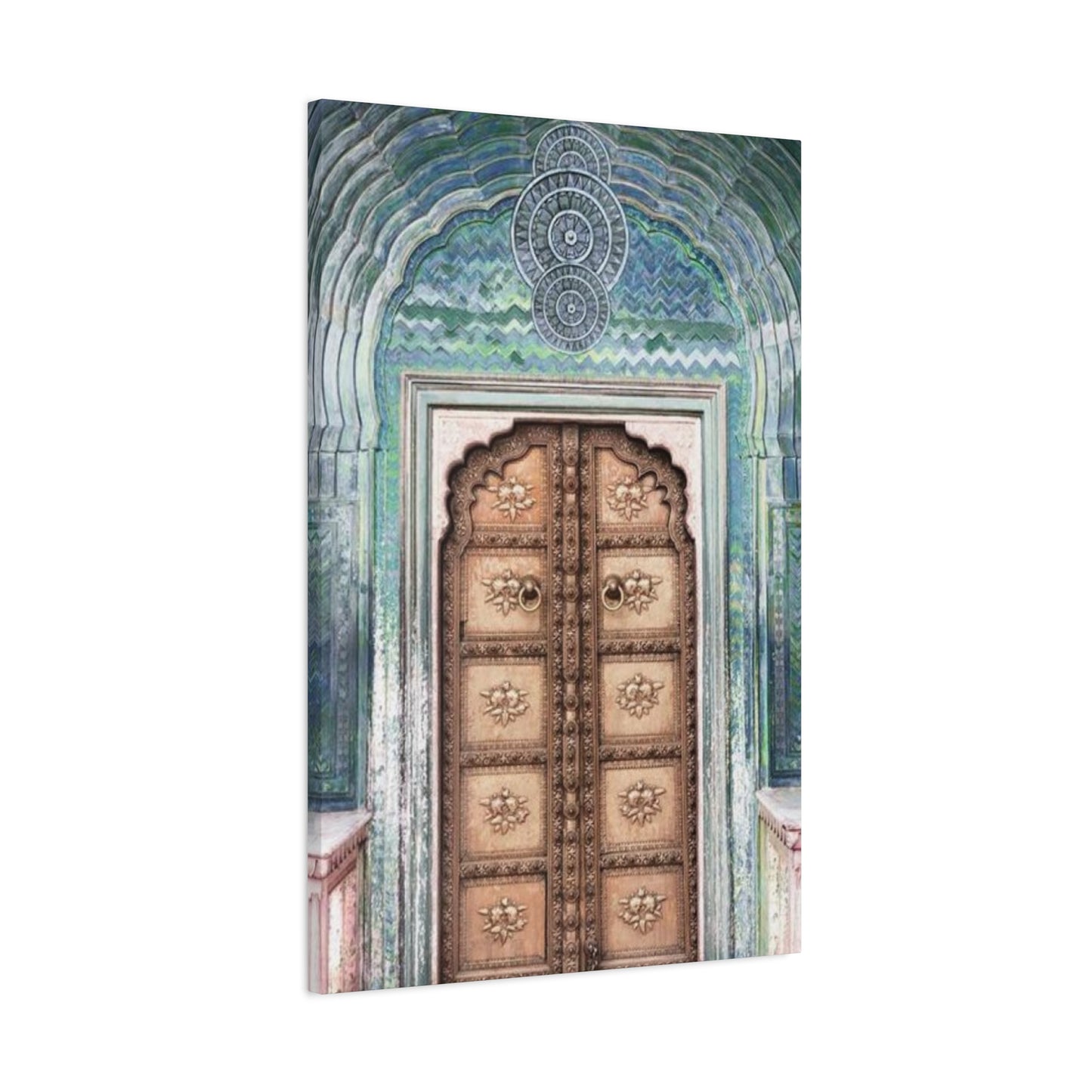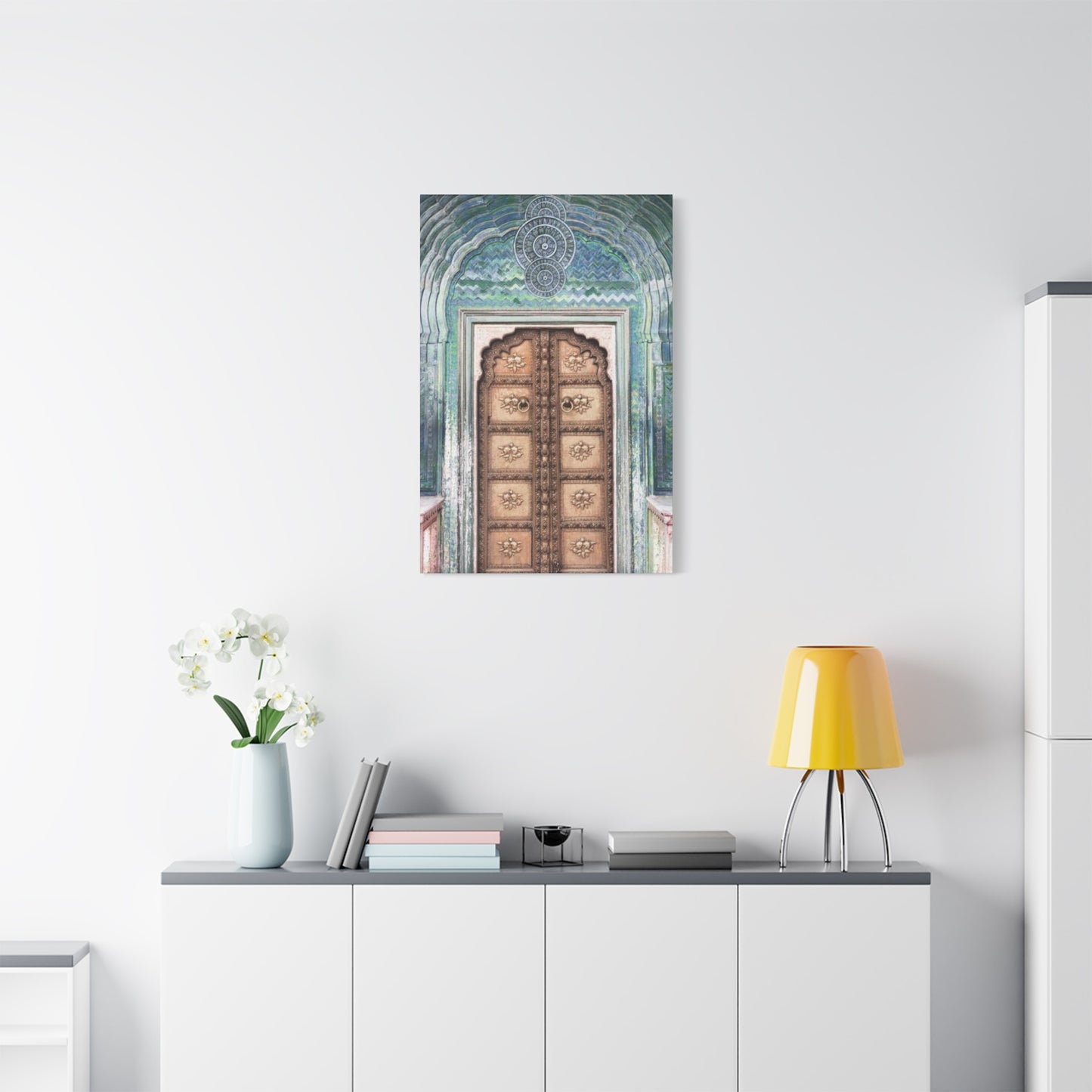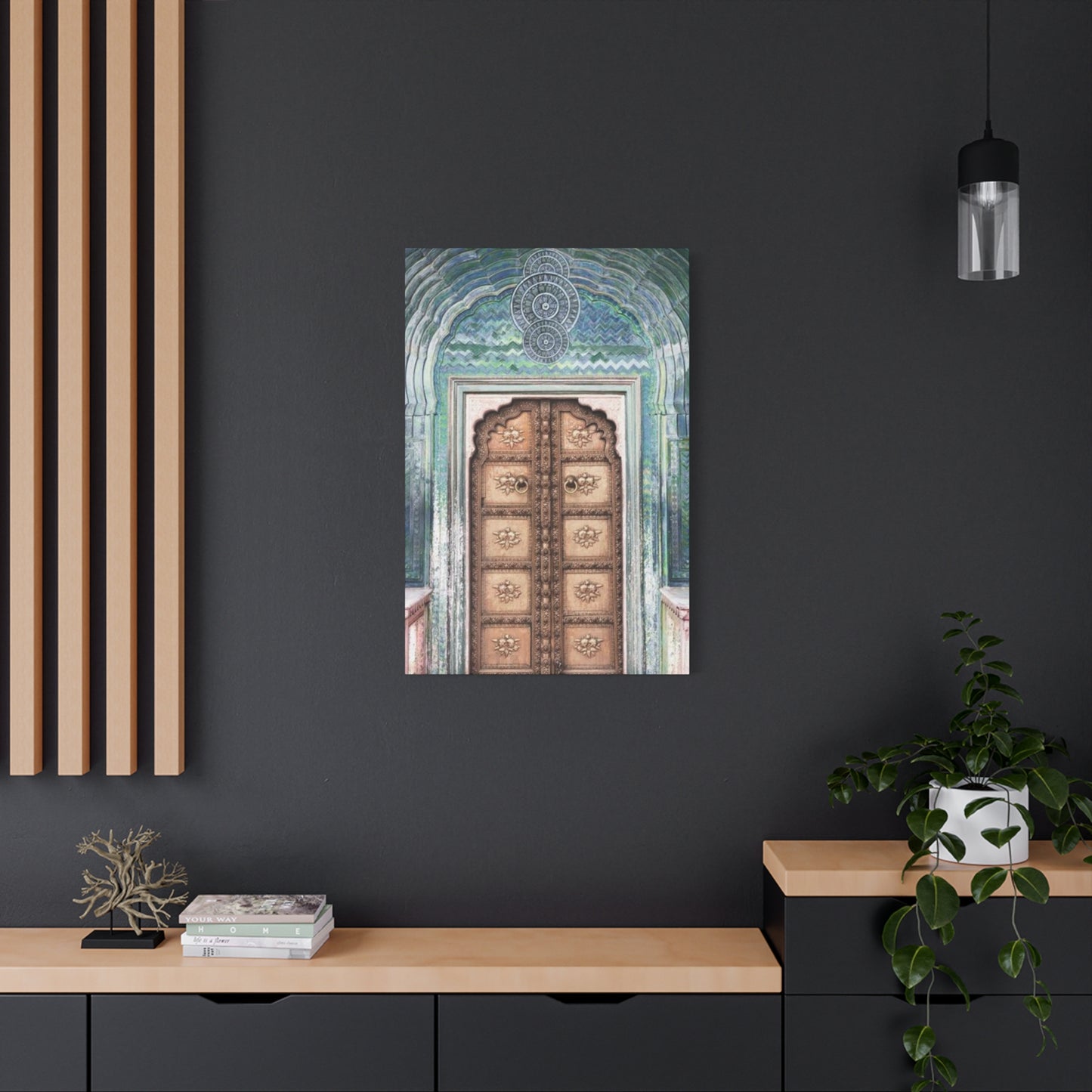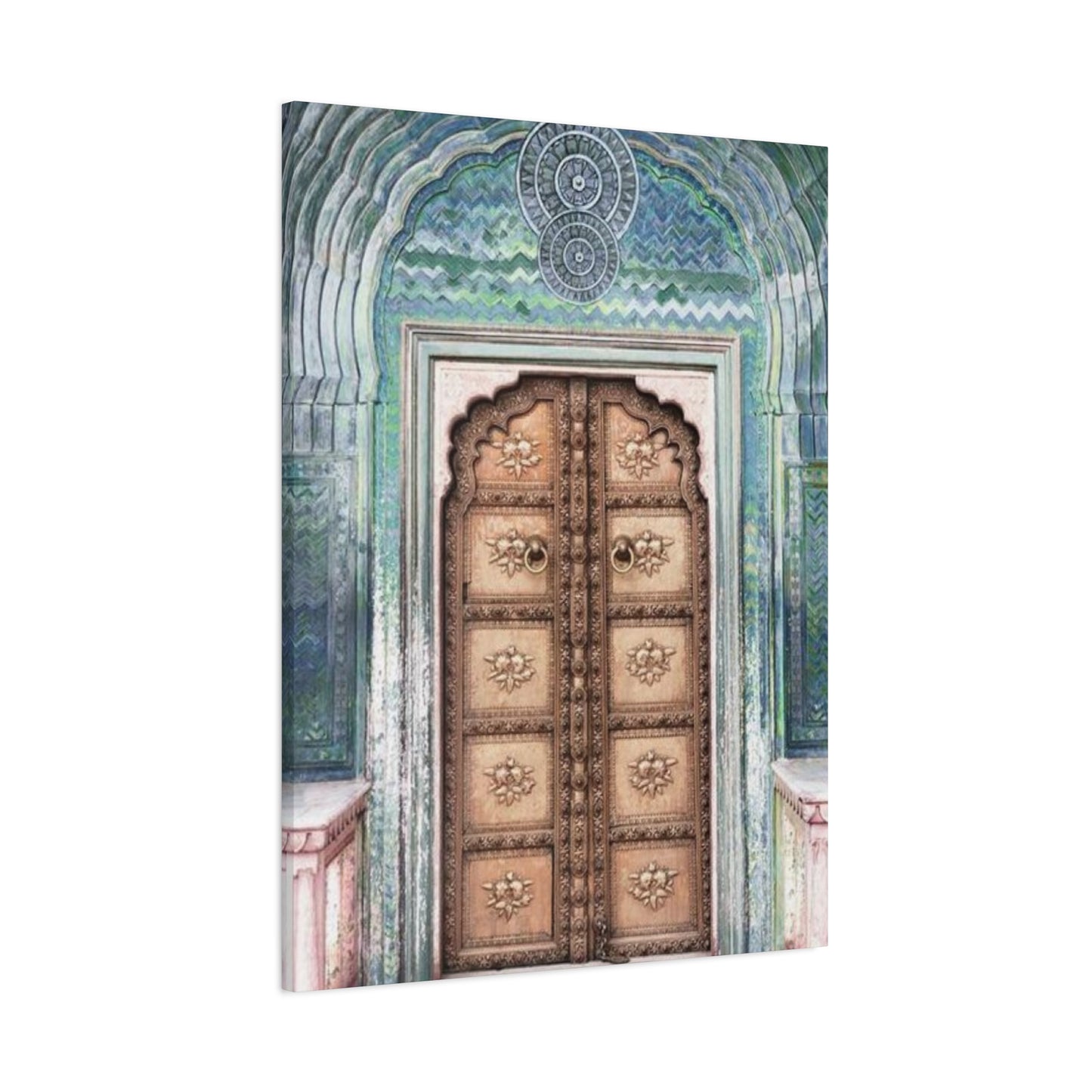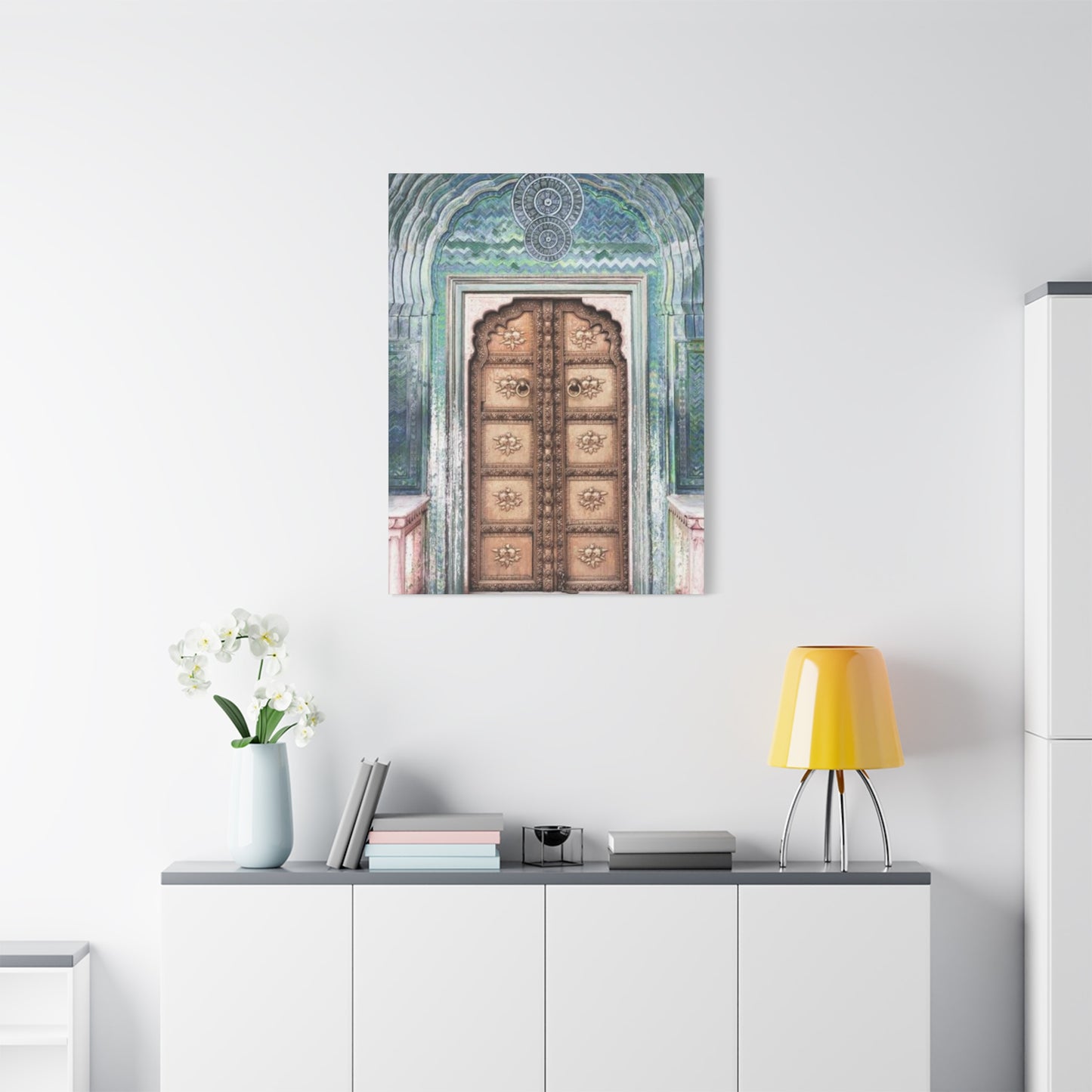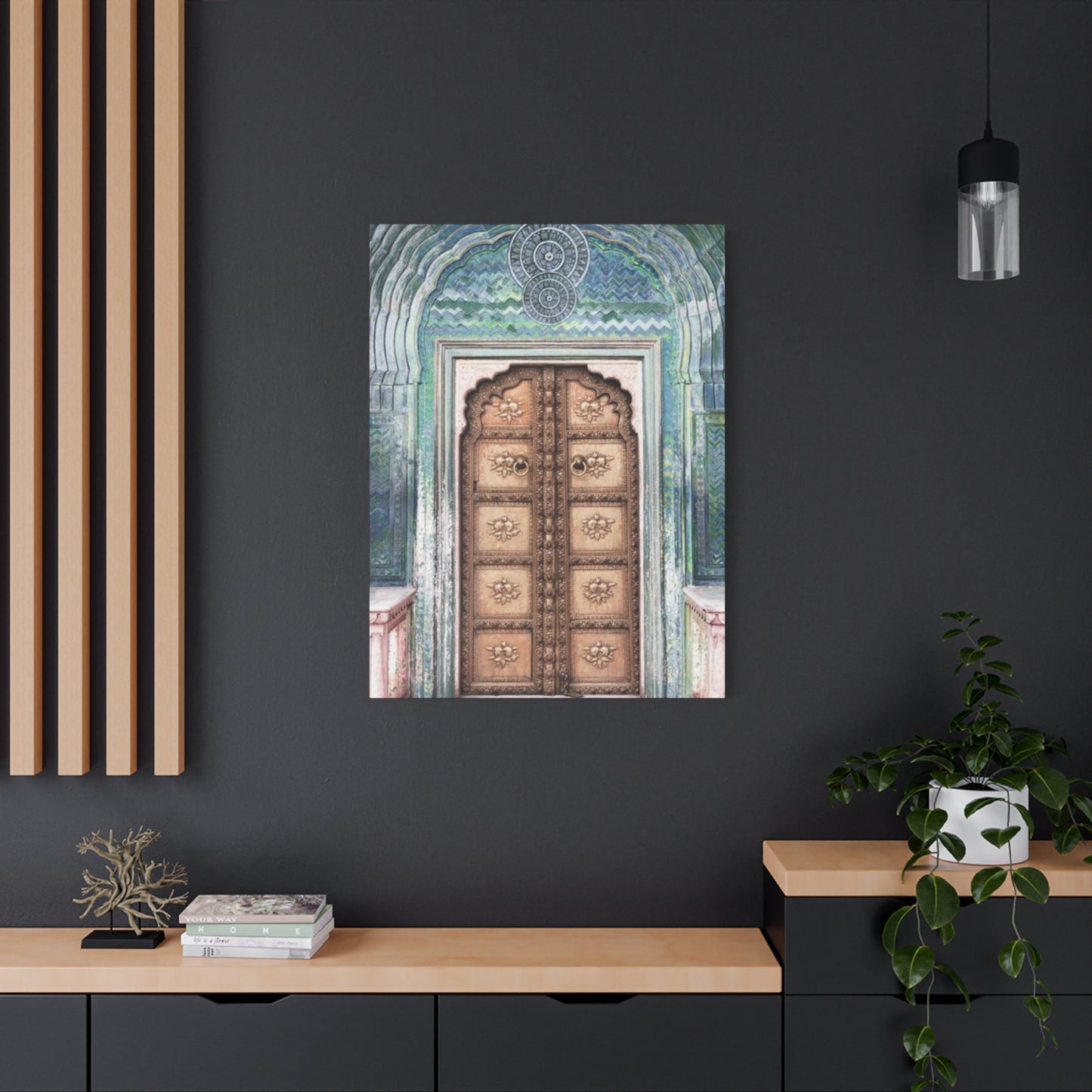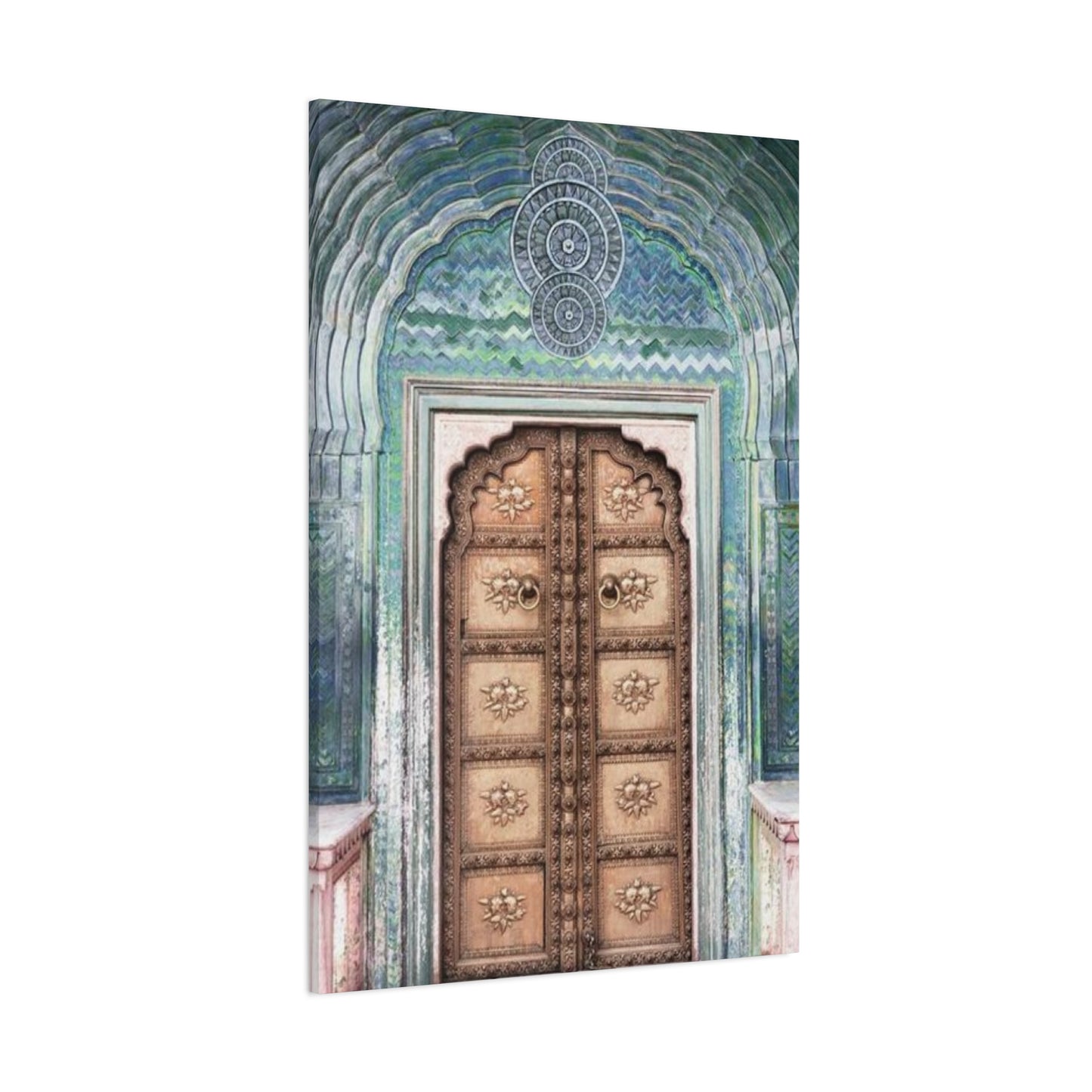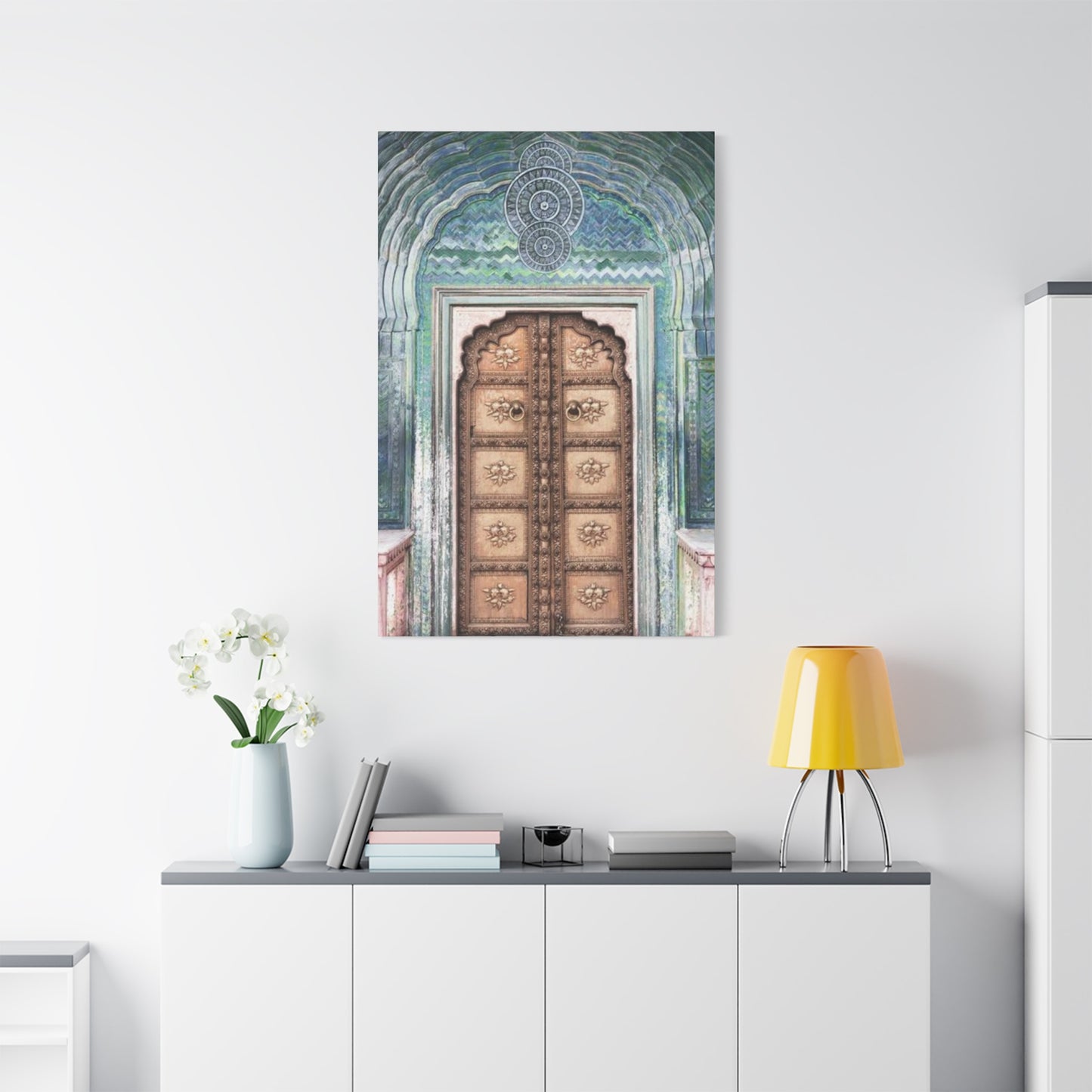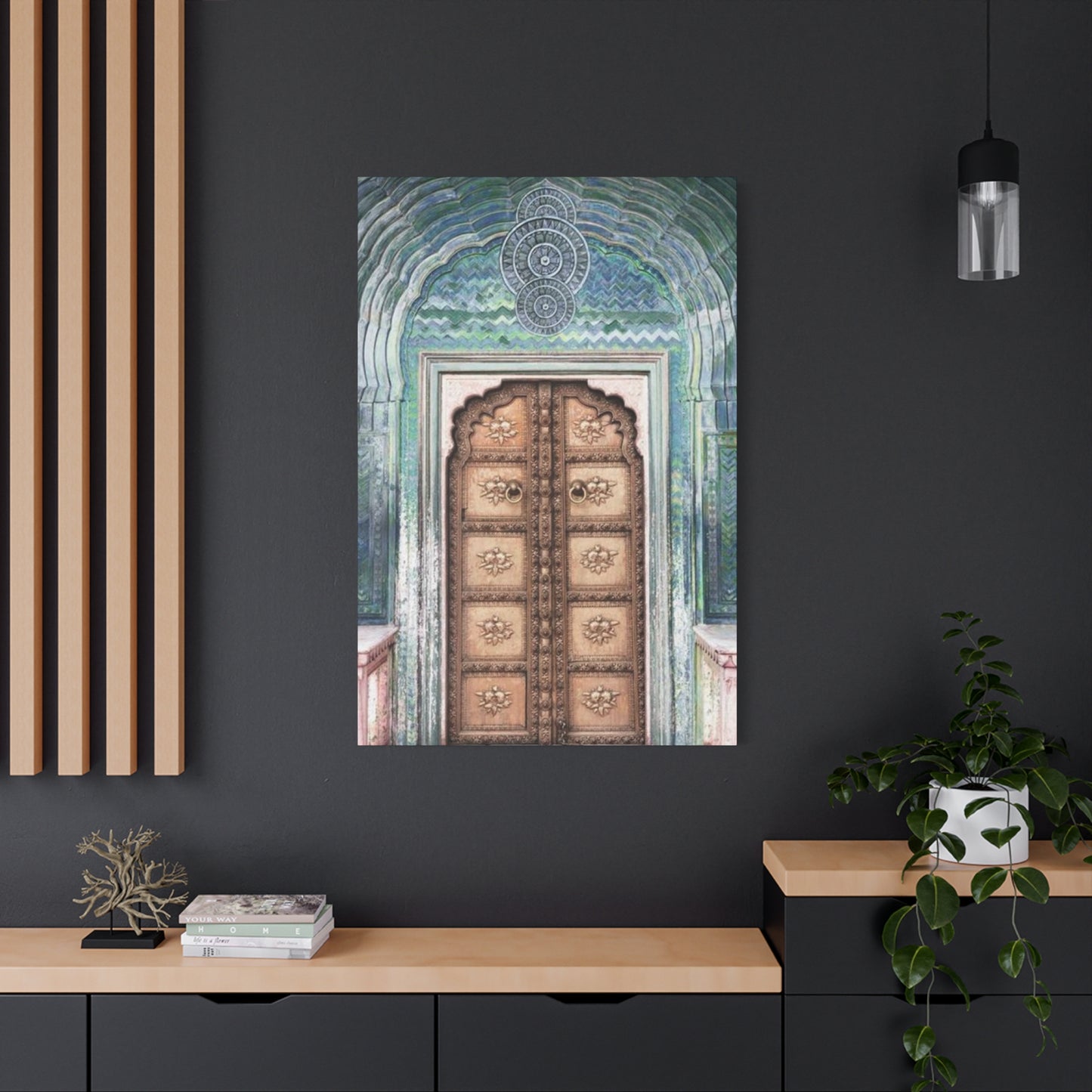Moroccan Blue Wall Art: Timeless Architectural Elegance and Cultural Heritage
The mesmerizing beauty of Moroccan blue accents has captivated architects, designers, and art enthusiasts for centuries. This distinctive azure palette, deeply rooted in North African culture, represents more than mere aesthetic choice—it embodies spiritual significance, historical traditions, and architectural mastery that continues to influence contemporary design worldwide. From the vibrant cobalt tiles adorning ancient palaces to the subtle cerulean touches in modern Moroccan homes, blue wall art and architectural elements create an atmosphere of tranquility, sophistication, and cultural authenticity that transcends time and geographical boundaries.
Beloved Azure Tones in North African Architectural Tradition
Moroccan design encompasses a rich spectrum of blue variations, each carrying distinct cultural meanings and visual impact. The most cherished shade remains the iconic Majorelle blue, named after French artist Jacques Majorelle who fell in love with Morocco's vibrant culture. This electric cobalt hue became synonymous with Moroccan artistic expression, appearing prominently in garden walls, decorative screens, and architectural details throughout Marrakech and beyond.
Chefchaouen blue represents another beloved variation, derived from the famous "Blue Pearl" city nestled in the Rif Mountains. This particular shade combines cobalt with subtle white undertones, creating a calming powder blue that transforms ordinary walls into ethereal canvases. Local artisans traditionally mixed this pigment using indigo and lime, producing variations that shift from deep azure to pale sky blue depending on lighting conditions and application techniques.
Persian blue finds its place in more formal architectural settings, particularly in religious buildings and palatial structures. This deeper, more saturated hue conveys dignity and spiritual reverence, often appearing in intricate tile work, carved plaster details, and ceremonial doorways. The pigment's intensity allows it to maintain its vibrancy even when applied to large surfaces, making it ideal for creating dramatic focal points within architectural compositions.
Turquoise blue brings a lighter, more playful element to Moroccan design palettes. This blue-green hybrid captures the essence of Mediterranean waters and desert oases, frequently appearing in fountain tiles, bathroom decorations, and courtyard accents. Its natural affinity with water makes it particularly suitable for areas where moisture and cooling effects are desired, both practically and symbolically.
Indigo blue connects modern Moroccan architecture to ancient Berber traditions. This deep, mysterious shade carries historical significance, having been traded across Saharan caravan routes for millennia. Contemporary applications often feature indigo in textile wall hangings, ceramic installations, and painted accent walls that honor ancestral craftsmanship while serving modern aesthetic purposes.
Royal blue elevates Moroccan architectural elements to regal status, appearing in formal reception areas, ceremonial halls, and important civic buildings. This majestic shade commands attention while maintaining the sophisticated restraint characteristic of North African design philosophy. When combined with gold accents and geometric patterns, royal blue creates an atmosphere of luxury and cultural refinement that speaks to Morocco's imperial heritage.
Ceramic Tiles as North African Building Accents
The artistry of blue ceramic tiles represents one of Morocco's most distinctive architectural contributions, transforming functional surfaces into magnificent decorative displays. Master craftsmen known as maâlems have perfected these techniques over generations, creating tiles that serve both practical and aesthetic purposes in building design. The process begins with carefully selected clay, shaped and fired using traditional methods passed down through centuries of continuous practice.
Zellige tiles constitute the most prestigious form of Moroccan ceramic work, hand-cut from terra cotta and glazed with natural mineral pigments. Each tile measures approximately two inches square, allowing for intricate geometric compositions that can cover entire walls, floors, and architectural features. The irregular surface created by hand-cutting gives zellige its characteristic light-reflecting properties, causing blue tones to shimmer and dance as viewing angles change throughout the day.
Geometric patterns formed by blue ceramic tiles follow mathematical principles that create infinite, continuous designs without beginning or end. These patterns, known as tawriq, reflect Islamic artistic traditions that avoid representational imagery in favor of abstract geometric forms. Popular motifs include eight-pointed stars, hexagonal honeycomb patterns, and interlacing polygons that create optical illusions of movement and depth when executed in varying shades of blue.
Installation techniques for blue ceramic tiles require extraordinary skill and patience, as each piece must be individually placed according to predetermined patterns. Artisans work from detailed drawings called hasba, calculating exact tile requirements and pattern alignments before beginning installation. The adhesive traditionally consists of lime mortar mixed with specific proportions of sand and organic additives that ensure long-lasting adherence while allowing for slight movement in building materials.
Maintenance of blue ceramic tile installations involves regular cleaning with traditional methods that preserve both color integrity and surface texture. Craftsmen recommend using natural soap solutions and soft brushes rather than harsh chemicals that might damage the delicate glaze surface. Proper maintenance ensures that blue ceramic accents retain their vibrancy for decades, developing a subtle patina that actually enhances their visual appeal over time.
Modern applications of blue ceramic tiles extend beyond traditional settings to include contemporary residential and commercial projects worldwide. Architects and designers increasingly specify authentic Moroccan tiles for accent walls, kitchen backsplashes, bathroom installations, and exterior facades where weather resistance and visual impact are equally important. The tiles' natural variation in color and texture provides organic warmth that mass-produced alternatives cannot replicate.
Quality considerations for blue ceramic tiles include evaluating clay composition, firing temperatures, glaze thickness, and color consistency within acceptable variation ranges. Authentic Moroccan tiles display slight irregularities that confirm their handmade origin, while maintaining structural integrity and weather resistance appropriate for their intended applications. Buyers should verify the tiles' provenance and manufacturing methods to ensure they receive genuine articles rather than machine-made imitations.
Azure Entryways: Distinctive Features of North African Residences
Blue doors serve as powerful symbols of welcome, protection, and cultural identity throughout Moroccan architecture, creating memorable first impressions that reflect the inhabitants' values and aesthetic sensibilities. These entrances function as transitional elements between public and private realms, often featuring elaborate decorative treatments that showcase traditional craftsmanship and artistic heritage. The choice of blue pigments for door treatments carries specific cultural meanings that vary according to regional traditions and family preferences.
Traditional blue door construction begins with solid wood frames, typically crafted from local cedar or olive wood that provides durability and resistance to climate variations. Artisans apply multiple coats of specially prepared blue paint, often mixed with natural binders and protective additives that ensure long-lasting color retention despite exposure to intense sunlight and occasional rainfall. The painting process follows time-honored techniques that create smooth, even surfaces while preserving the wood's natural texture and grain patterns.
Hardware selection for blue doors emphasizes both functionality and decorative appeal, featuring hand-forged iron or brass elements that complement the chosen blue tones. Traditional hardware includes elaborate knockers, decorative hinges, ornate locks, and protective corner guards that serve practical purposes while contributing to the door's overall visual impact. Many hardware pieces incorporate geometric patterns or calligraphic designs that echo broader architectural themes throughout the building.
Regional variations in blue door treatments reflect local traditions, available materials, and cultural influences that have evolved over centuries of architectural development. Coastal regions often favor lighter blue tones that complement maritime environments, while inland areas may prefer deeper, more saturated blues that contrast dramatically with desert landscapes. Mountain communities sometimes incorporate multiple blue shades within single door designs, creating complex color relationships that reflect the varied hues of sky and landscape visible from elevated locations.
Symbolic meanings associated with blue doors include protection from evil influences, invitation of good fortune, and demonstration of spiritual devotion. Many Moroccan families believe that blue pigments possess mystical properties that safeguard their homes and inhabitants from negative energies while attracting positive influences. These beliefs influence not only color selection but also the timing of door painting, often coordinated with religious observances or significant family events.
Maintenance requirements for blue doors depend on pigment quality, surface preparation, and environmental exposure factors that affect color retention and surface condition. Traditional maintenance involves annual inspection and touch-up applications using the same pigment formulations employed in original painting. Proper maintenance ensures that blue doors continue serving their protective and decorative functions while maintaining their symbolic significance within the community.
Contemporary adaptations of blue door traditions appear in modern Moroccan architecture and international projects inspired by North African design principles. Contemporary versions may incorporate updated materials, improved weather protection, and modern hardware while preserving the essential aesthetic and cultural elements that make blue doors so distinctive. These adaptations demonstrate how traditional architectural features can evolve to meet current needs while maintaining their cultural authenticity.
Installation considerations for blue doors include proper frame alignment, weather stripping, threshold design, and integration with surrounding architectural elements. Professional installation ensures that doors operate smoothly while providing adequate security, weather protection, and acoustic performance. Proper installation also guarantees that decorative elements remain properly aligned and that color relationships with adjacent surfaces achieve their intended visual effects.
Harmonizing Azure Elements with Natural Moroccan Color Schemes
The sophisticated interplay between blue accents and earthy Moroccan tones creates architectural compositions that feel both vibrant and grounded, reflecting the natural harmony between sky and earth that characterizes North African landscapes. This color relationship draws inspiration from the region's diverse environments, from coastal areas where azure waters meet sandy beaches to mountain regions where brilliant skies contrast with terracotta cliffs and olive-green vegetation.
Terracotta red serves as blue's most compelling companion in traditional Moroccan architecture, creating dynamic contrasts that energize visual compositions while maintaining cultural authenticity. This warm, earth-derived hue appears in structural elements, roof tiles, decorative pottery, and painted surfaces that provide rich backdrops for blue accents. The temperature contrast between cool blues and warm terracotta creates visual tension that keeps architectural compositions engaging without becoming overwhelming or chaotic.
Sand beige functions as a neutral mediator between blue and warmer accent colors, providing visual rest areas that allow more intense hues to maintain their impact without competing for attention. This subtle, naturally occurring tone appears in stucco walls, stone paving, carved details, and textile elements that support rather than dominate architectural compositions. Sand beige's versatility allows it to work with various blue intensities while maintaining the serene, contemplative atmosphere characteristic of Moroccan design.
Olive green introduces natural vitality to blue and earth-tone combinations, reflecting Morocco's agricultural heritage and connection to Mediterranean landscapes. This organic hue appears in painted shutters, garden elements, ceramic details, and decorative accessories that bridge the gap between built environments and natural settings. Olive green's complexity—containing both yellow and blue components—allows it to harmonize naturally with blue accents while providing sufficient contrast to maintain visual interest.
Warm white serves multiple functions in blue and earth-tone compositions, from highlighting architectural details to providing clean backgrounds that allow other colors to achieve maximum impact. Moroccan white often contains subtle warm undertones that prevent harsh contrasts while maintaining the brightness necessary for hot climate conditions. This sophisticated neutral appears in ceiling treatments, trim details, decorative plasterwork, and accent elements that contribute to overall compositional balance.
Ochre yellow adds sunshine warmth to blue and earth-tone palettes, reflecting the intense North African light that influences all aspects of Moroccan architecture. This mineral-derived pigment appears in painted details, ceramic accents, textile elements, and decorative objects that introduce cheerful energy without overwhelming more subdued color relationships. Ochre's natural origin and historical significance in Moroccan art make it an authentic choice for traditional and contemporary applications alike.
Burnt sienna deepens and enriches blue and earth-tone combinations, providing sophisticated accent opportunities that enhance rather than compete with primary color relationships. This complex brown-red appears in wooden elements, leather details, decorative metalwork, and painted surfaces that add depth and richness to architectural compositions. Burnt sienna's warm undertones complement blue while its earth-derived character maintains connection to Moroccan landscape traditions.
Color proportion strategies for combining blue with earth tones typically emphasize one dominant hue supported by carefully measured amounts of complementary colors. Traditional approaches often feature earth tones as primary colors with blue serving accent functions, though contemporary interpretations may reverse this relationship or achieve more balanced distributions. Successful proportioning requires understanding how different colors interact under various lighting conditions and viewing distances.
Lighting considerations significantly impact how blue and earth-tone combinations appear throughout daily and seasonal cycles, requiring careful attention to natural and artificial illumination effects. North African sunlight intensifies blue tones while warming earth colors, creating dynamic relationships that change throughout the day. Evening lighting often emphasizes warmer tones while reducing blue intensity, suggesting the need for lighting design that maintains color relationships across various conditions.
Azure Mosaic Work in North African Wall and Ceiling Applications
The magnificent tradition of blue mosaic work represents one of Morocco's most sophisticated architectural arts, transforming plain surfaces into breathtaking displays of geometric precision and chromatic beauty. Master craftsmen spend years perfecting techniques that combine mathematical precision with artistic sensitivity, creating installations that serve both decorative and spiritual functions within architectural compositions. These intricate works require extensive planning, skilled execution, and deep understanding of Islamic geometric principles that guide pattern development and color relationships.
Traditional mosaic techniques begin with careful selection of materials, including various blue-toned stones, ceramics, glass pieces, and metal inlays that contribute to overall compositional effects. Artisans cut each piece by hand using specialized tools that create precise shapes while maintaining material integrity and surface quality. The cutting process requires extraordinary skill and patience, as even minor variations in size or angle can disrupt pattern continuity and visual harmony throughout large installations.
Pattern development follows ancient mathematical principles that create infinite, seamless designs capable of covering surfaces of any size or shape. Popular blue mosaic patterns include radiating stars, interlocking polygons, flowing arabesques, and geometric interpretations of natural forms that maintain abstract character while suggesting organic inspiration. These patterns often combine multiple blue shades with accent colors that enhance rather than compete with primary blue themes.
Installation methods for blue mosaic work require specialized expertise in surface preparation, adhesive application, pattern layout, and joint finishing techniques that ensure long-lasting performance and visual perfection. Craftsmen typically work from detailed drawings that specify exact piece placement, color distribution, and pattern alignment across complex surfaces. The installation process may require several weeks or months for large projects, depending on pattern complexity and surface area coverage.
Color gradation techniques within blue mosaic installations create subtle depth and movement effects that enliven static surfaces while maintaining overall design harmony. Skilled artisans understand how to distribute various blue tones throughout patterns to create focal points, suggest directional movement, and enhance three-dimensional architectural features. These gradation effects often follow natural light patterns or architectural geometries that reinforce broader design themes.
Wall applications for blue mosaic work range from small accent panels to entire surface coverings that transform architectural character and spatial perception. Lower wall areas, known as dado treatments, commonly feature blue mosaic work that provides durable, easily maintained surfaces while creating rich visual foundations for upper wall treatments. Full-height mosaic installations create dramatic focal points that can anchor entire room compositions while providing acoustic and thermal benefits.
Ceiling applications present unique challenges and opportunities for blue mosaic installations, requiring specialized mounting techniques and careful consideration of viewing angles and lighting effects. Blue ceiling mosaics often feature radiating patterns centered on architectural features such as domes, lanterns, or decorative medallions that draw attention upward while creating sense of celestial connection. These installations require additional structural support and weather protection in exterior applications.
Maintenance procedures for blue mosaic installations focus on preserving both individual piece integrity and overall pattern continuity through regular cleaning, joint maintenance, and selective replacement of damaged elements. Traditional maintenance uses natural cleaning agents and soft tools that remove accumulated dirt and deposits without damaging delicate mosaic surfaces. Proper maintenance ensures that blue mosaic installations retain their original brilliance and pattern clarity for generations of continued enjoyment.
Contemporary applications of blue mosaic techniques appear in modern architectural projects worldwide, adapting traditional methods to current materials, installation systems, and design requirements. Contemporary versions may incorporate new adhesives, backing systems, and protective treatments while preserving essential aesthetic and technical qualities that define authentic Moroccan mosaic work. These adaptations demonstrate how ancient crafts can evolve to meet current needs while maintaining their cultural significance and artistic integrity.
Azure Enhancement of North African Courtyard Environments
Blue accents play transformative roles in Moroccan courtyard design, creating cooling visual effects that complement the practical and symbolic functions of these central gathering areas. Traditional courtyards serve as hearts of Moroccan homes, providing private outdoor areas that support family life while protecting inhabitants from harsh climate conditions. The strategic use of blue elements enhances these functional benefits while creating beautiful environments that celebrate Moroccan artistic traditions and cultural values.
Water features within courtyards benefit dramatically from blue accent treatments that enhance cooling effects through both visual and psychological associations. Blue tiles lining fountain basins reflect water movement while intensifying the sense of coolness and tranquility that water provides in hot climates. The interaction between moving water and blue surfaces creates dynamic light patterns that enliven courtyard atmospheres throughout daily cycles while providing soothing auditory backgrounds for relaxation and contemplation.
Seating areas around courtyard perimeters often incorporate blue cushions, tiles, or painted surfaces that create comfortable environments for family gatherings and social activities. Blue's cooling associations make it particularly suitable for areas where people spend extended periods during hot weather, providing psychological comfort that complements physical cooling strategies. These seating arrangements typically feature low benches or built-in platforms that accommodate traditional sitting customs while providing comfortable support for various activities.
Plant selection for courtyards often emphasizes species that complement blue accent treatments while providing practical benefits such as shade, fragrance, and climate moderation. Green foliage creates natural color harmonies with blue elements while softening hard architectural surfaces and providing privacy screening. Popular courtyard plants include citrus trees, jasmine vines, mint herbs, and flowering shrubs that contribute pleasant fragrances while requiring minimal water resources in arid climates.
Shade structures within courtyards frequently feature blue fabric panels, painted wooden elements, or ceramic details that filter harsh sunlight while creating comfortable outdoor environments. Traditional shade solutions include retractable awnings, pergola structures, and decorative screens that provide flexible sun protection while maintaining airflow and visual connections between different courtyard areas. Blue treatments on these elements enhance their cooling effectiveness while contributing to overall aesthetic coordination.
Lighting design for courtyards considers how blue accents appear under various natural and artificial illumination conditions, ensuring that color relationships remain effective throughout daily and seasonal cycles. Traditional approaches often emphasize warm evening lighting that complements blue elements without overwhelming their cooling character. Modern lighting may incorporate color-changing capabilities that allow blue accents to adapt to different occasions and seasonal preferences.
Privacy considerations in courtyard design often involve blue screens, painted walls, or decorative panels that provide visual separation while maintaining architectural continuity with broader design themes. These privacy elements serve practical functions while contributing to overall compositional effects that create sense of enclosure and intimacy within outdoor environments. Blue treatments on privacy elements help them recede visually while maintaining their screening effectiveness.
Acoustic design within courtyards benefits from blue treatments on hard surfaces that might otherwise create unwanted sound reflections or echoes. Blue tiles, painted surfaces, and decorative elements can incorporate texture variations that help control sound while maintaining visual appeal. The combination of water features, plantings, and textured blue surfaces creates acoustic environments that support conversation and relaxation while screening unwanted external noises.
Seasonal adaptations for courtyard environments may include removable blue elements, changeable fabric treatments, or adjustable features that allow spaces to accommodate different weather conditions and usage patterns. Traditional approaches often feature lightweight blue textiles that can be stored during cooler months or harsh weather periods. Contemporary versions might incorporate retractable blue elements or modular systems that provide seasonal flexibility while maintaining design integrity.
Classical versus Contemporary Azure Elements in North African Building Design
The evolution of blue accents in Moroccan architecture reflects changing technologies, materials, cultural influences, and design philosophies while maintaining essential characteristics that preserve cultural authenticity and artistic integrity. Traditional approaches emphasize handcrafted elements, natural materials, time-honored techniques, and symbolic meanings that connect contemporary projects to centuries of architectural heritage. Contemporary interpretations adapt these principles to current needs while exploring new possibilities for blue accent integration.
Traditional blue accent applications rely heavily on natural pigments, handmade ceramics, carved plaster, and other artisanal techniques that create unique, unreproducible results with subtle variations that enhance rather than detract from overall compositions. These approaches require extensive time investments, specialized skills, and access to traditional materials that may be increasingly difficult to obtain. However, the results possess authenticity and character that mass-produced alternatives cannot replicate, justifying the additional effort and expense required for traditional execution.
Material differences between traditional and contemporary approaches often center on authenticity versus practicality considerations that affect both appearance and performance characteristics. Traditional materials like natural pigments, handmade tiles, and carved plaster offer superior aesthetic qualities but may require more maintenance and provide less consistent performance than contemporary alternatives. Modern materials may offer improved durability, easier maintenance, and more predictable results while potentially sacrificing some visual richness and cultural authenticity.
Manufacturing methods distinguish traditional from contemporary blue accent production, with handcrafted approaches creating unique results that reflect individual artisan skills and natural material variations. Contemporary manufacturing may employ machinery, standardized processes, and quality control systems that ensure consistency while potentially reducing the organic character that makes traditional work so appealing. Some contemporary producers attempt to combine traditional aesthetics with modern production efficiency, though results vary widely in terms of authenticity and quality.
Design philosophy differences affect how traditional and contemporary projects approach blue accent integration, with traditional approaches emphasizing cultural continuity, symbolic meanings, and time-tested aesthetic principles. Contemporary approaches may prioritize innovation, functionality, sustainable practices, or integration with modern building systems while still respecting cultural foundations. Successful contemporary projects often achieve balance between innovation and tradition that honors heritage while meeting current needs.
Installation techniques for traditional blue accents require specialized craftsman skills that have been passed down through generations of practice, often involving complex procedures that cannot be easily mechanized or standardized. Contemporary installation methods may employ modern tools, adhesives, and mounting systems that reduce labor requirements and improve long-term performance while potentially changing the final appearance or requiring different maintenance approaches than traditional installations.
Cost considerations significantly impact choices between traditional and contemporary blue accent approaches, with handcrafted traditional work typically requiring higher initial investments but potentially providing longer service life and greater cultural value. Contemporary alternatives may offer lower initial costs and reduced maintenance requirements while providing acceptable aesthetic results for projects with limited budgets or tight construction schedules.
Cultural authenticity questions arise when comparing traditional and contemporary approaches, particularly in projects that claim to represent genuine Moroccan architectural traditions. Traditional approaches obviously provide greater authenticity, though even these may incorporate some contemporary elements out of necessity or practicality. Contemporary interpretations must carefully balance innovation with respect for cultural traditions to avoid creating superficial or inappropriate representations of Moroccan design principles.
Maintenance requirements often differ significantly between traditional and contemporary blue accent installations, with traditional work typically requiring specialized knowledge, traditional materials, and time-honored techniques for proper preservation. Contemporary installations may use standard maintenance procedures and readily available materials while providing adequate performance for most applications. Long-term preservation of cultural heritage installations typically favors traditional maintenance approaches even when contemporary alternatives exist.
Performance characteristics including durability, weather resistance, color retention, and structural integrity may vary between traditional and contemporary approaches depending on specific materials, installation methods, and environmental conditions. Traditional approaches often provide excellent long-term performance when properly executed and maintained, though they may be more vulnerable to certain types of damage or deterioration. Contemporary approaches may offer improved resistance to specific problems while potentially creating new vulnerability areas that require different prevention or treatment strategies.
Function of Azure in North African Sacred Architecture
Blue pigments and decorative elements hold profound spiritual significance within Moroccan religious architecture, serving functions that extend far beyond mere aesthetic enhancement to encompass symbolic, psychological, and devotional purposes that support worship and contemplation. Islamic architectural traditions incorporate blue elements according to specific principles that respect religious requirements while creating environments conducive to prayer, meditation, and spiritual reflection. These applications demonstrate how color can serve both artistic and spiritual functions within sacred contexts.
Mosque applications of blue elements typically focus on areas that enhance rather than distract from worship activities, with careful attention to Islamic principles regarding appropriate decoration in religious settings. Blue tile work often appears in ablution areas, courtyard surfaces, minaret details, and entrance treatments that welcome worshippers while maintaining appropriate solemnity and dignity. The cooling associations of blue make it particularly suitable for areas where people gather for extended periods in hot climates.
Mihrab treatments frequently incorporate blue accents that help focus attention on prayer direction while avoiding figurative representations that might conflict with Islamic artistic principles. Blue ceramic work, painted details, or carved plaster elements can create subtle directional emphasis through geometric patterns, calligraphic designs, or abstract compositions that support rather than compete with spiritual focus. These treatments often feature verses from the Quran or other religious texts rendered in elegant calligraphy.
Courtyard applications in religious settings utilize blue elements to create peaceful environments that support preparation for worship and community gathering activities. Blue fountain tiles, painted wall sections, and decorative screens provide visual relief while maintaining the subdued character appropriate for religious contexts. The psychological cooling effects of blue help create comfortable environments for extended stays during community events and religious observances.
Minaret decoration often features blue accent elements that provide visual landmarks while avoiding excessive ornamentation that might conflict with Islamic architectural principles. Blue ceramic bands, painted details, or tile work can create modest decorative effects that enhance rather than dominate architectural forms. These treatments must balance aesthetic appeal with religious appropriateness while serving practical functions such as weather protection and structural identification.
Educational facility applications within religious complexes often incorporate blue elements in libraries, study areas, and gathering halls where Islamic learning takes place. Blue's associations with knowledge, contemplation, and spiritual reflection make it particularly appropriate for these settings, where it can provide conducive environments for study and discussion. These applications often feature subtle blue accents that support rather than distract from educational activities.
Symbolic interpretations of blue in Islamic contexts include associations with divinity, infinity, truth, and spiritual purity that make it especially suitable for religious architectural applications. These meanings influence both color selection and pattern development, with blue elements often incorporated into geometric designs that reflect Islamic mathematical and spiritual principles. The infinite character of geometric patterns combined with blue's symbolic associations creates environments that support contemplation and spiritual reflection.
Regional variations in religious blue applications reflect local traditions, available materials, and specific religious practices that vary across different areas of Morocco and the broader Islamic world. Coastal regions might emphasize lighter blue tones that reflect maritime influences, while inland areas may prefer deeper blues that contrast with desert landscapes. These variations demonstrate how universal religious principles can accommodate local cultural expressions while maintaining essential spiritual functions.
Maintenance considerations for blue elements in religious settings must balance preservation requirements with continued functionality for worship and community activities. Regular cleaning and maintenance ensure that decorative elements continue supporting their spiritual functions while providing appropriate environments for religious observance. Traditional maintenance approaches often involve community participation, creating opportunities for shared stewardship of sacred spaces.
Contemporary applications of blue in modern Islamic architecture continue traditional principles while adapting to current materials, construction methods, and community needs. Modern mosques and Islamic centers worldwide often incorporate blue elements that honor traditional significance while meeting contemporary functional requirements. These adaptations demonstrate how religious architectural traditions can evolve while preserving essential spiritual and cultural characteristics.
Azure Patterns and Their Cultural Importance
The intricate patterns featuring blue elements in Moroccan architecture carry deep cultural meanings that extend beyond visual appeal to encompass spiritual beliefs, social values, mathematical principles, and artistic traditions that have evolved over centuries of continuous development. These patterns serve as carriers of cultural information, transmitting knowledge about Islamic philosophy, Berber heritage, Arab influences, and local customs through visual language that speaks across linguistic and cultural boundaries. Understanding these pattern meanings enhances appreciation for the sophisticated cultural system they represent.
Geometric pattern foundations in Moroccan blue work derive from Islamic mathematical principles that emphasize unity, infinity, and divine order through repeated motifs that can extend indefinitely without beginning or end. These patterns reflect theological concepts about the nature of creation, the infinite character of divine attributes, and the underlying mathematical harmony that governs natural phenomena. Blue coloration within these patterns often emphasizes celestial associations, connecting earthly architectural elements to heavenly realms through symbolic color relationships.
Star patterns featuring blue elements represent some of the most sophisticated achievements in Islamic geometric art, combining complex mathematical relationships with symbolic meanings related to divine guidance, spiritual enlightenment, and cosmic order. Eight-pointed stars, sixteen-pointed variations, and complex star-and-polygon compositions create infinite patterns that challenge viewers' perception while suggesting profound truths about the nature of reality and spiritual knowledge. Blue coloration within star patterns often emphasizes their celestial character while creating focal points that draw attention to pattern centers.
Arabesque patterns incorporating blue elements provide more flowing, organic alternatives to rigid geometric compositions while maintaining abstract character appropriate for Islamic artistic contexts. These curvilinear designs suggest plant forms, water movement, or calligraphic elements without representing specific natural objects that might conflict with religious artistic principles. Blue coloration within arabesque patterns often enhances their flowing character while creating sense of movement and vitality that energizes architectural surfaces.
Calligraphic patterns using blue elements transform sacred texts into decorative compositions that serve both informational and ornamental functions within religious and secular contexts. Verses from the Quran, religious prayers, or poetic texts become integral architectural elements that provide spiritual guidance while creating beautiful decorative effects. Blue coloration for calligraphic elements often emphasizes their sacred character while ensuring legibility against contrasting background colors.
Border patterns featuring blue elements provide transitional zones between different architectural areas while creating rhythmic visual effects that unify larger compositions. These patterns often feature repeating motifs that create sense of movement and continuity while providing appropriate scales for various architectural applications. Blue border patterns can emphasize architectural divisions, frame important areas, or create visual connections between separate design elements.
Color symbolism within blue patterns reflects multiple cultural influences including Islamic spiritual concepts, Berber traditional beliefs, Arab artistic heritage, and local customs that have developed through centuries of cultural interaction. Blue's associations with protection, spirituality, wisdom, and divine favor make it particularly suitable for patterns that serve both decorative and symbolic functions. Different blue tones may carry specific meanings that influence their use in particular pattern contexts or architectural applications.
Regional pattern variations reflect local artistic traditions, available materials, and specific cultural influences that distinguish different areas of Morocco while maintaining connection to broader Islamic artistic principles. Coastal regions might emphasize patterns suggesting water or maritime themes, while mountain areas could feature motifs reflecting local landscape characteristics. These variations demonstrate how universal pattern principles can accommodate local cultural expressions while maintaining essential artistic and spiritual functions.
Pattern scale considerations affect how blue elements appear within architectural contexts, with large-scale patterns creating dramatic effects appropriate for major architectural features while smaller patterns provide detailed enrichment for intimate areas. Successful pattern application requires understanding how scale relationships affect visual impact, pattern recognition, and overall compositional harmony within specific architectural contexts.
Contemporary interpretations of traditional blue patterns continue cultural traditions while adapting to modern materials, construction methods, and design requirements. Contemporary applications might simplify complex traditional patterns for easier production while maintaining essential visual and symbolic characteristics. These adaptations demonstrate how cultural patterns can evolve to meet current needs while preserving their essential cultural significance and artistic integrity.
Integrating Azure Elements with Warm Color Schemes in North African Architecture
The sophisticated art of combining blue accents with warm color palettes in Moroccan architecture creates dynamic visual relationships that reflect both natural phenomena and cultural preferences developed through centuries of architectural evolution. This color harmony draws inspiration from Morocco's diverse landscapes, where azure skies contrast beautifully with warm earth tones, golden desert sands, and the rich terracotta of traditional building materials. Successful integration requires understanding how different colors interact under various lighting conditions while maintaining cultural authenticity and visual appeal.
Temperature contrast principles govern successful blue and warm color combinations, with cool blue elements providing visual relief and psychological cooling effects that balance the energizing impact of warm colors. This contrast creates visual tension that keeps architectural compositions engaging while avoiding monotony or overwhelming intensity. The psychological effects of temperature contrast can influence spatial perception, making areas appear larger, cooler, or more inviting depending on the specific color relationships and proportions employed.
Proportion strategies for mixing blue with warm colors typically emphasize one temperature family while using the other for accent purposes, though more balanced distributions can work effectively in larger or more complex compositions. Traditional Moroccan approaches often feature warm colors as dominant themes with blue providing strategic accent points that create focal areas and visual relief. Contemporary interpretations might reverse this relationship or explore more balanced distributions that reflect modern aesthetic preferences while maintaining cultural resonance.
Red and blue relationships create some of the most dynamic color combinations in Moroccan architecture, with various red tones from deep burgundy to bright vermillion providing dramatic contrasts with different blue variations. Terracotta red pairs naturally with lighter blues, while deeper navy or indigo blues can handle more intense red relationships. These combinations often appear in tile work, painted details, and textile elements that create vibrant focal points within architectural compositions.
Orange and blue combinations offer slightly softer alternatives to red and blue relationships while maintaining strong visual impact and cultural authenticity. Warm orange tones from pale peach to deep burnt orange create harmonious yet contrasting relationships with various blue shades. These combinations frequently appear in sunset-inspired color schemes that reflect the natural phenomena visible in Moroccan skies, creating romantic and inviting atmospheric effects.
Yellow and blue partnerships provide the strongest possible color contrast while maintaining cheerful, optimistic character appropriate for residential and hospitality applications. Golden yellow tones complement deeper blues particularly well, creating rich, luxurious effects reminiscent of traditional Moroccan metalwork and jewelry. Lighter yellows work effectively with brighter blues to create fresh, energetic compositions suitable for courtyards, children's areas, and casual gathering areas.
Earth tone mediation helps integrate blue accents with warm color schemes by providing neutral transition zones that prevent harsh contrasts while maintaining color relationships. Brown, beige, and tan tones serve as bridges between blue and warm colors, creating smooth color progressions that feel natural and comfortable. These mediating colors often appear in larger surface areas such as walls and floors, providing stable backgrounds for more intense color relationships.
Pattern integration strategies combine blue and warm colors within geometric or arabesque designs that distribute color relationships throughout architectural surfaces rather than concentrating them in specific areas. Traditional tile patterns often alternate blue and warm colored elements in carefully calculated proportions that create balanced visual effects while maintaining pattern clarity and cultural authenticity. These integrated approaches require careful planning to ensure that color relationships support rather than compete with pattern recognition.
Lighting considerations significantly impact how blue and warm color combinations appear under different illumination conditions, requiring careful attention to both natural and artificial light sources. Moroccan sunlight tends to intensify warm colors while slightly muting blues, creating different color relationships throughout daily cycles. Evening lighting often emphasizes warm colors while reducing blue intensity, suggesting the need for lighting design that maintains effective color relationships across various conditions.
Seasonal adaptations may be necessary to maintain optimal blue and warm color relationships as lighting conditions change throughout yearly cycles. Some installations incorporate adjustable elements such as removable textile components or changeable accent pieces that allow color relationships to adapt to seasonal preferences and lighting variations. These flexible approaches demonstrate how traditional color principles can accommodate changing conditions while maintaining cultural authenticity and visual effectiveness.
Azure Accent Illumination in North African Building Design
The strategic illumination of blue architectural elements represents a sophisticated aspect of Moroccan design that enhances both aesthetic appeal and functional performance while creating atmospheric effects that support cultural and spiritual objectives. Traditional lighting approaches often relied on natural illumination patterns, candle light, and oil lamps that created warm, flickering effects that interacted beautifully with blue surfaces and decorative elements. Contemporary applications expand these possibilities through advanced lighting technologies while maintaining respect for traditional aesthetic principles and cultural significance.
Natural light interaction with blue elements varies dramatically throughout daily and seasonal cycles, creating dynamic visual effects that contribute to the living character of Moroccan architecture. Morning light often emphasizes the cool, fresh qualities of blue accents while providing clear visibility for detailed pattern work and decorative elements. Midday illumination intensifies blue saturation while creating strong shadow patterns that enhance three-dimensional architectural features. Evening light tends to warm blue tones while creating romantic atmospheric effects that support relaxation and contemplation.
Artificial lighting design for blue accent areas requires careful consideration of color temperature, intensity levels, and distribution patterns that enhance rather than compete with natural blue pigments and materials. Warm white lighting often provides the most flattering illumination for blue elements, creating rich color relationships that maintain blue's cooling character while providing comfortable viewing conditions. Cool white lighting can enhance blue intensity but may create harsh effects that reduce visual comfort and cultural appropriateness.
Accent lighting techniques focus illumination directly on blue architectural elements to create dramatic effects that emphasize pattern details, surface textures, and color relationships. These approaches often use concealed light sources that highlight decorative elements without creating glare or visual distraction. Accent lighting works particularly well for blue tile installations, carved plaster details, and painted surfaces that benefit from enhanced visibility and visual prominence within architectural compositions.
Conclusion
Moroccan Blue wall art captures the essence of timeless architectural elegance and the rich cultural heritage of North Africa, offering a visually captivating and spiritually soothing addition to any living space. Inspired by the iconic blue hues found in Moroccan cities like Chefchaouen, this art style evokes a sense of tranquility, depth, and mystery. It’s more than just a color palette—it’s a tribute to centuries of artistic tradition, Moorish design, and symbolic storytelling.
From hand-painted tiles to arched doorways and intricate mosaics, Moroccan Blue wall art beautifully reflects the fusion of Islamic, Berber, and Andalusian influences. These designs are not only aesthetically pleasing but also deeply rooted in spiritual and cultural meaning. The shades of blue are traditionally believed to ward off evil spirits and symbolize peace, protection, and the vastness of the sky and sea. Incorporating this artwork into your home connects you with a legacy of craftsmanship and a visual language that transcends borders.
In terms of design versatility, Moroccan Blue wall art adapts effortlessly to a variety of interior styles. Whether your space leans toward bohemian, Mediterranean, minimalist, or eclectic décor, these pieces can provide either a vibrant focal point or a calming backdrop. Pairing Moroccan Blue with natural textures—such as wood, rattan, or stone—further enhances its grounding effect, creating a balanced and harmonious environment. These artworks can bring elegance to entryways, serenity to bedrooms, or an exotic touch to living rooms and patios.
Beyond its visual impact, Moroccan Blue art carries a narrative—of exploration, spirituality, and artistic resilience. It invites viewers into a world of medinas, riads, and ancient alleyways, rich with culture and layered in meaning. Displaying such artwork in your home reflects an appreciation for heritage, travel, and the enduring beauty of global design traditions.
In conclusion, Moroccan Blue wall art is a powerful expression of cultural elegance and timeless charm. It honors a deep artistic legacy while offering a modern, serene aesthetic that elevates any room. By embracing this iconic color and design, you invite peace, depth, and a touch of the exotic into your space—creating a home that feels both worldly and warmly personal.

















